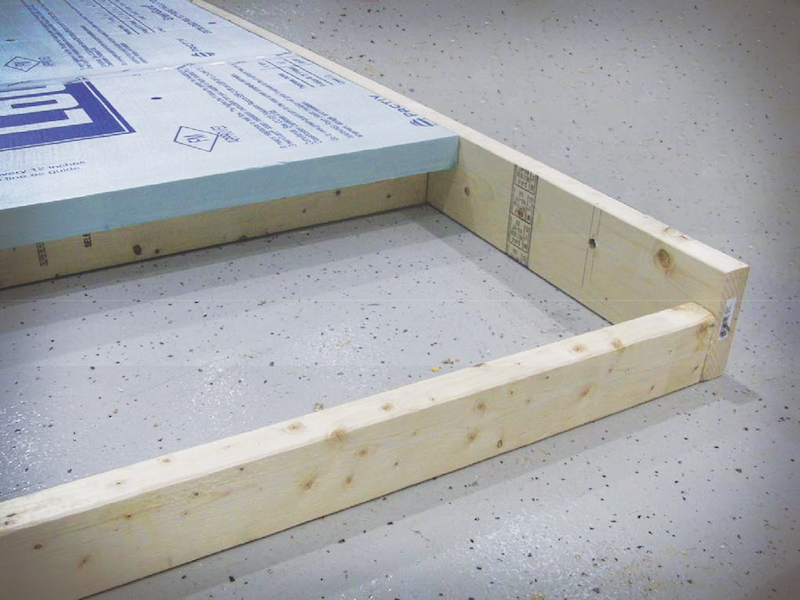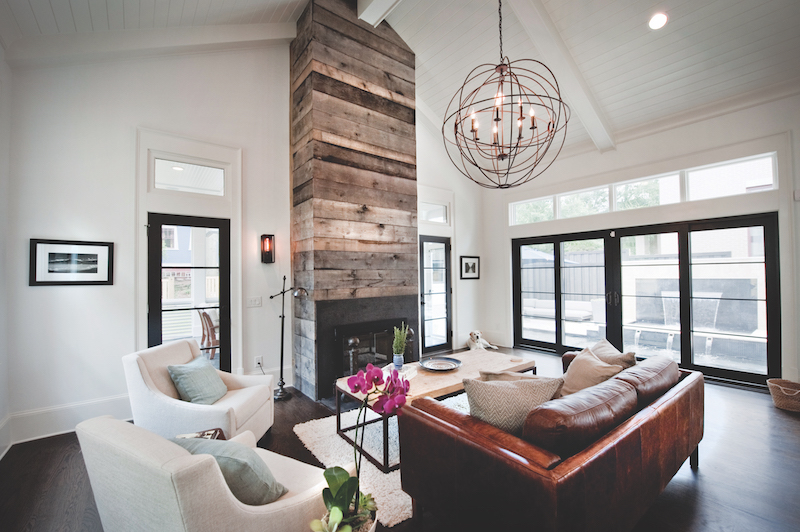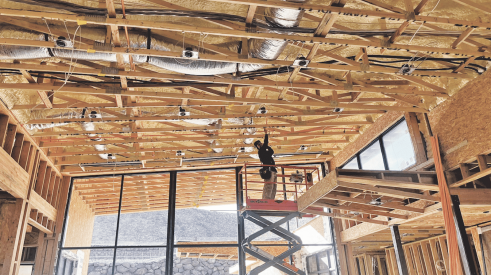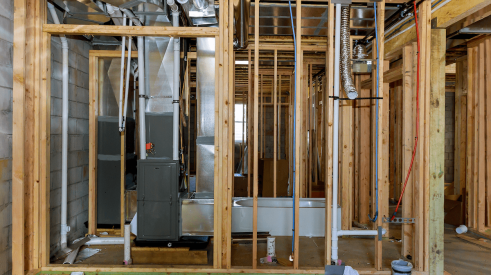Builders are under pressure to build the tightest, best-insulated buildings ever. Homes built this way must be structurally sound and free of defects, fire hazards, and mold and moisture problems. They must also be cheaper and faster to construct than ever before. It’s a tall order.
Luckily, building science helps builders gain more control over design and construction to ensure that homes perform to code and to customer expectations. Upcoming initiatives will help builders measure and analyze each attribute of their homes that affects customers’ perceptions of quality and will help improve those numbers.
Measuring quality can be complicated. Much of the construction industry seems to be stuck on competing via relentless attention to costs instead of thriving through attention to quality and detail. This change in focus doesn’t just demand measuring; it requires continually using those measurements to improve. The new reality of the building industry means designing and building to tighter and tighter tolerances. This is the building science imperative.
RELATED
- Indoor Air Quality Road Map: A Smart Range Hood
- Energy-Efficiency Road Map: Whole-Building Envelope Sealing
Solutions for 3 Technical Challenges Facing the Housing Industry
This past year, the Department of Energy Building America initiative honed its building science strategy to focus on solutions to the three big technical challenges facing the housing industry today. The department recently published a Building America Research-to-Market Plan to help overcome these challenges. The plan outlines three Technology to Market Roadmaps with detailed objectives to help builders do better work and better business.
1. High-performance, moisture-managed envelope solutions
Moisture-managed, high-performance building assemblies in both new and renovated homes must manage moisture risk, reduce mold potential, and improve building durability. Superior envelope solutions will have increased insulation, reduced infiltration, reduced risk of condensation, and provide adequate drying potential year round. Homes with these solutions are more durable and comfortable, and less costly to maintain.
2. Optimal comfort systems for low-load homes
High-performance homes have dramatically lowered heating and cooling requirements, but interior moisture loads aren’t lower. The comfort equation has changed. We must work to provide efficient HVAC solutions for high-performance homes with low thermal loads. That includes optimal efficiency, managed airflow, and relative humidity control at all partial-load conditions. The best systems lessen humidity and comfort risks common to high-performance homes that have reduced airflow requirements and longer periods without HVAC operation.
3. Optimal ventilation and indoor air quality (IAQ) solutions
Tighter building enclosures lead to less outside air getting in. Controlled mechanical ventilation is required in modern homes to enable energy-efficient, tight construction while maintaining or improving occupant comfort and IAQ. It’s essential to provide smart ventilation systems and source control solutions for improved IAQ, with minimized energy penalties.

This wall detail (above) shows the solid nailing surface for housewrap, windows, and siding that’s possible when rigid foam is installed inside instead of outside OSB or plywood sheathing. Wider top and bottom plates (2x6 inch plates with 2x4 studs, or 2x8 plates with 2x6 studs) leave space for a layer of rigid foam that’s flush with the plates, providing an even surface for OSB or plywood.
New projects will offer solutions so that builders can address the increasing demands for performance and quality in these areas:
• Framing and moisture. In the Moisture Performance of High-R Wall Systems project, Home Innovation Research Labs (formerly the NAHB Research Center) is testing up to 20 different wood-framed wall systems in real houses to assess their moisture durability performance, develop wall system design guidance, and improve methods for assessing the moisture durability of envelope assembly systems.
• Plate and beam wall systems. In the Extended Plate and Beam Wall System (EP&B) project, Home Innovation Research Labs is investigating methods for commercializing the innovative EP&B wall system, developed in previous projects. EP&B offers a simplified method for incorporating 2 inches of continuous rigid insulation into a traditional 2-by-4 framed wall assembly.
• High-performance HVAC. In the “Plug-n-play” HVAC System project, IBACOS is investigating a simplified air delivery system for residential HVAC systems. It’s a simple, innovative solution to common air distribution and comfort delivery issues and is pertinent to low-load production-built homes.
• Heat and humidity. Studies of production-scale HVAC solutions at the University of Central Florida (UCF) include work in hot and humid climates in order to enable 50 percent whole-house energy savings compared with houses built to code. In the Smart Ventilation Systems for Production Homes project, the UCF team is testing new smart ventilation systems aimed at saving space-conditioning energy use while improving comfort, moisture, and peak load impacts.
• Sealing, ventilation, and distribution. The Gas Technology Institute is developing a systems approach for managing air sealing, ventilation, and air distribution during weatherization and home improvement projects.
Though several solutions are under development, there are tools you can use today. The Building America Solution Center provides guidelines, images, design details, training content, and code compliance briefs.
Eric Werling directs the DOE Building America Program, an industry partnership program that is transforming new and existing housing through high-performance housing innovation.
6 Ways to Measure Construction Quality
Measuring quality is essential to improvement. With measurements, you can see trends, problem areas and gains made through improvement efforts. Consider using some of the quality measurement methods below to monitor how well your trade contractors are doing.
Trade contractor inspections: In this approach, field superintendents count the number of items on punch lists or tally the number of pickup marks made in the home. Classification of items provides excellent detail for future analysis, but achieving measurement consistency among inspectors might be a challenge.
A simpler variation is to rate quality performance on each job. At Schuck and Sons, a Phoenix-area framing contractor, every job is rated (0 to 4 demerit points) in each of nine categories, such as dimensioning, hardware installation, and plumb and level. The data provide sufficient detail to identify problem areas, but pinpointing specific quality issues requires a review of raw inspection reports.
Code inspections: Code correction items are easy to record as additional information on existing inspection forms. Count each correction item even when it does not result in a red tag. This measurement is important especially when working with government officials to streamline code inspection.
Builder satisfaction ratings: Most useful when done monthly, builder satisfaction ratings allow builder field superintendents to rate their satisfaction with contractor quality. Usually quality is one item in an array of performance measurements, such as on-time performance and safety.
Homeowner closing inspection: The importance of closing homes with zero defects places special emphasis on monitoring the number of closing correction items. A related measurement is the number of items found on the quality walk in preparation for closing.
Homeowner satisfaction ratings: Some builders ask homeowners for feedback on their satisfaction on specific aspects of their homes. Properly designed, homeowner ratings link directly to specific trade contractors. For example, a survey that asks about interior woodwork workmanship quality can measure the quality of finish carpenters. The usefulness of the approach is limited to finish trades.
Warranty callback items: The number and/or cost of warranty callback items can provide an overall measurement of quality trends. Warranty measurements are useful for tracking overall quality trends and surfacing problem areas that might have been overlooked. The actual measurement can lag behind construction by a year or more, so it needs to be combined with other quality measurements.
Edward Caldeira is the founder and CEO of FTQ360, a quality and safety software platform, and is the former director of quality services for the NAHB Research Center.
Advertisement
Related Stories
Sustainability
Mention of Eco-Friendly Home Features Is on the Rise in Sales Listings
Home listing descriptions using eco-friendly terms have been rising over the past five years in line with growing consumer interest in the environment and energy efficiency
Construction
5 Steps to Cracking the Code for a High-Performance Home
As a model of energy savings, water conservation, indoor comfort and health, and use of on-site renewable energy, The New American Home 2024 offers valuable lessons
Sustainability
Which Green Building Practices Are Home Builders Using Most?
A recent report reveals which green-building practices are most popular among single-family home builders and remodelers







